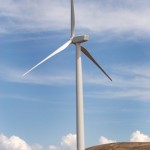Economies in Australia and New Zealand strengthened by wind power
 Wind farms in Australia are making an increasingly larger contribution to the nation’s economic performance and should continue doing so in the future, according to a new study commissioned by the Clean Energy Council (CEC).
Wind farms in Australia are making an increasingly larger contribution to the nation’s economic performance and should continue doing so in the future, according to a new study commissioned by the Clean Energy Council (CEC).
The study, conducted by consultants Sinclair Knight Merz, found that a total of €3.4 billion has been invested in Australia as a result of wind power projects and, based on current proposed and approved projects, there is the potential for another €14.3 billion in local investment.
An accompanying CEC press release noted the study found a typical 50 megawatt (MW) wind farm pays host farmers some €202,000 per year, is constructed by workers who spend up to €970,000 locally, and contributes up to €65,000 annually to community projects.
“This independent report shows that wind farms have direct economic benefits for their local community, as well as major flow-on benefits for the state and the rest of the country,” CEC Policy Director Russell Marsh said in the press release.
“Wind farming can help farmers earn vital extra income, make better use of farming land, and insure against downturns in key commodities,” he said. “The income from turbines is sometimes the difference between staying on the land and selling the family farm.”
Marsh added that while communities near wind farms benefit from the economic activity, the “report shows that the construction of a 50 MW wind farm results in up to 147 direct jobs in the state and up to 238 in Australia.”
77% support wind farms
The CEC recently published a poll showing that in three Australian states — Victoria, New South Wales and South Australia — 77% of survey respondents said they supported wind farm developments.
The survey also found that 75% of respondents agreed that generating electricity through wind farms is a good idea in Australia and that 80% of respondents thought it likely that a wind farm could provide important income for farmers and other land owners.
Wind jobs and GDP on a par with oil and gas by 2030
In neighbouring New Zealand, meanwhile, a recent report indicates there will be considerable expansion of the nation’s wind power sector in the next two decades.
Prepared by economics consultancy BERL for the New Zealand Wind Energy Association, the report shows that in a scenario where wind supplies 20% of New Zealand’s electricity by 2030, the wind industry will be generating employment and GDP on a par with other industries such as the oil and gas exploration and extraction sector.
“Along with industry growth will come green growth opportunities for businesses,” says Eric Pyle, Chief Executive of the New Zealand Wind Energy Association. “The growing wind industry will provide opportunities for Kiwi companies to develop products and services for the domestic and international wind markets.”
According to the national association, the report indicates total employment in NZ’s wind industry could almost double, from 764 full time jobs to 1,430, by 2030.
The NZ association added that in 2011, the wind energy industry contributed €41 million to GDP. “Under a scenario where there is 3,500 MW of installed wind capacity in 2030, the wind energy industry’s total contribution to national GDP will be €99 million.”
Meanwhile, EU leaders are meeting for a summit today in Brussels. Let’s hope that they too get the message that investing in renewable energy stimulates green growth and contributes to overall economic health. Read more here.






